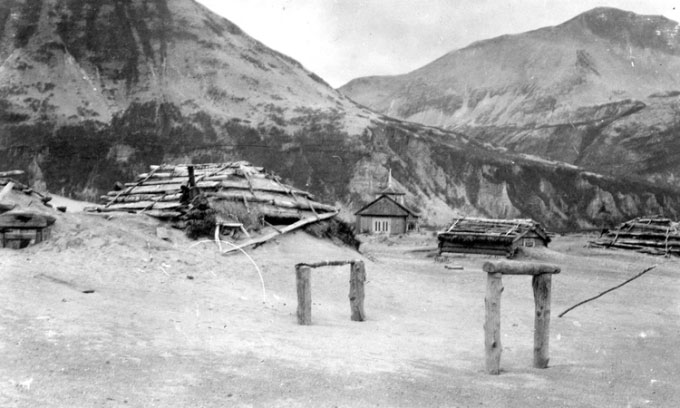Experts estimate that strong winds have carried ash from the 1912 volcanic eruption approximately 160 km towards Kodiak Island.
The ash cloud from the 1912 eruption of Novarupta volcano in Katmai National Park and Preserve (KNPP) is drifting towards Kodiak Island, Alaska. Strong northwesterly winds near KNPP and the Valley of Ten Thousand Smokes stirred up volcanic ash on November 17.

Ash around the church in Katmai village after the Novarupta volcanic eruption in June 1912. (Photo: USGS/G.C. Martin)
“At this time of year, northwesterly winds can sweep down from the Katmai area, carrying some of the ash that has settled from the 1912 eruption and lifting it into the atmosphere,” said Hans Schwaiger, a geophysicist with the U.S. Geological Survey (USGS) working at the Alaska Volcano Observatory.
Scientists estimate that the winds will carry volcanic ash approximately 160 km towards Kodiak Island, and the ash cloud is not expected to rise higher than 2,130 meters. A warning has also been issued for aircraft.
A small amount of ash may fall in nearby areas. “This cloud does not seem to contain as much ash as other clouds, so it may only deposit a negligible amount of ash,” Schwaiger noted.
The Novarupta volcanic eruption is particularly significant because it produced numerous layers of volcanic debris that settled on the ground, especially in the Valley of Ten Thousand Smokes. This is one of the most studied eruptions in the world. The event lasted three days, beginning on June 6, 1912, with ash projected to heights of up to 30,480 meters. The USGS estimates that about 15 km3 of magma was ejected, which is 30 times the amount of magma released during the eruption of Mount St. Helens in Washington State 40 years earlier.
The Novarupta eruption is considered the most powerful of the 20th century and ranks among the largest eruptions in history. Ash settled in what is now the Valley of Ten Thousand Smokes, with some areas accumulating over 180 meters thick. The strong, dry, and snow-free environment can sometimes create ash clouds, according to the Alaska Volcano Observatory. Currently, there are no eruptions occurring at Katmai.


















































